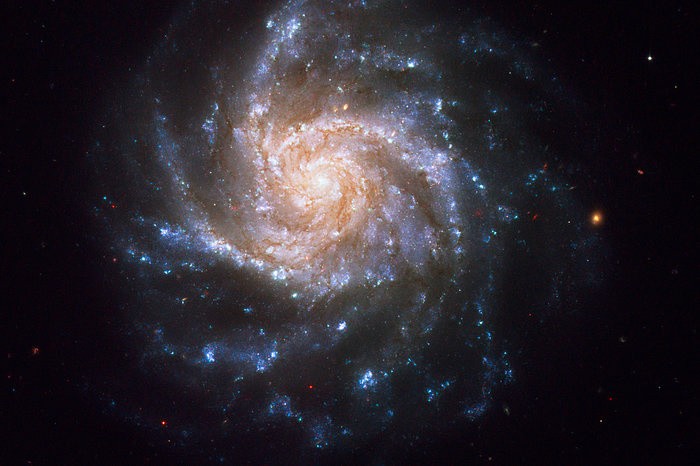A breathtaking image taken recently by the Hubble Space Telescope depicts the structure of a far-off spiral galaxy, extending its gorgeous spiral arms.
The galaxy, known as NGC 1961, is categorized as an active intermediate spiral galaxy (AGN). It can be traced about 180 million light-years away in the constellation Camelopardalis.

Dusty Spiral Arms
In this recently made public image from NASA's Hubble Space Telescope, the galaxy NGC 1961 unfolds its stunning spiral arms. The dusty spiral arms that wrap around the galaxy's burning core are dotted with glittering, blue regions of young, brilliant stars.
The galaxy NGC 1961 is an AGN or active galactic nucleus, and it has an intermediate spiral shape.
Since they lack a clearly defined bar of stars at their centers, intermediate spiral galaxies fall between "barred" and "unbarred" spiral galaxies, according to NASA.
AGN galaxies have extremely brilliant centers that frequently outshine the rest of the galaxy at specific wavelengths of light.
The galaxy's active nucleus is fueled by the supermassive black hole, which absorbs matter from its surroundings and emits enormous amounts of radiation in the form of brilliant jets and winds.
Low-Energy Charged Particles
According to NASA officials, recent Hubble observations indicate that NGC 1961 is a common form of AGN that releases low-energy charged particles.
NGC 1961 is categorized as an intermediate spiral galaxy because it lacks the typical central star-shaped bar structure that functions as a funnel to draw material from the surrounding accretion disc into the galaxy's core.
On September 14, NASA published a fresh image of NGC in 1961. The agency said claims that the Hubble data used to produce the image was gathered as part of research on Arp galaxies and supernovas.

Read also: 'Hubble vs James Webb Telescope:' Is NASA Webb's Deepest Image of the Universe Stunningly Clearer?
This article is owned by Tech Times
Written by Joaquin Victor Tacla
ⓒ 2025 TECHTIMES.com All rights reserved. Do not reproduce without permission.




